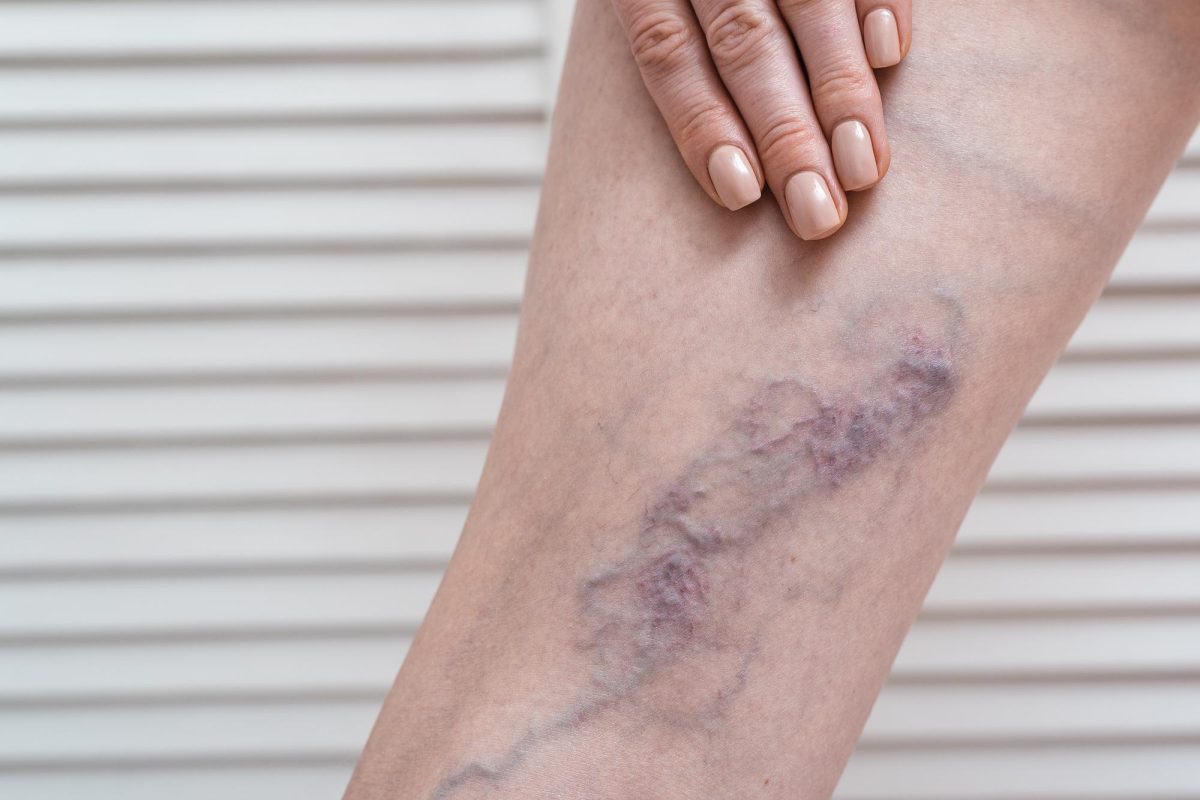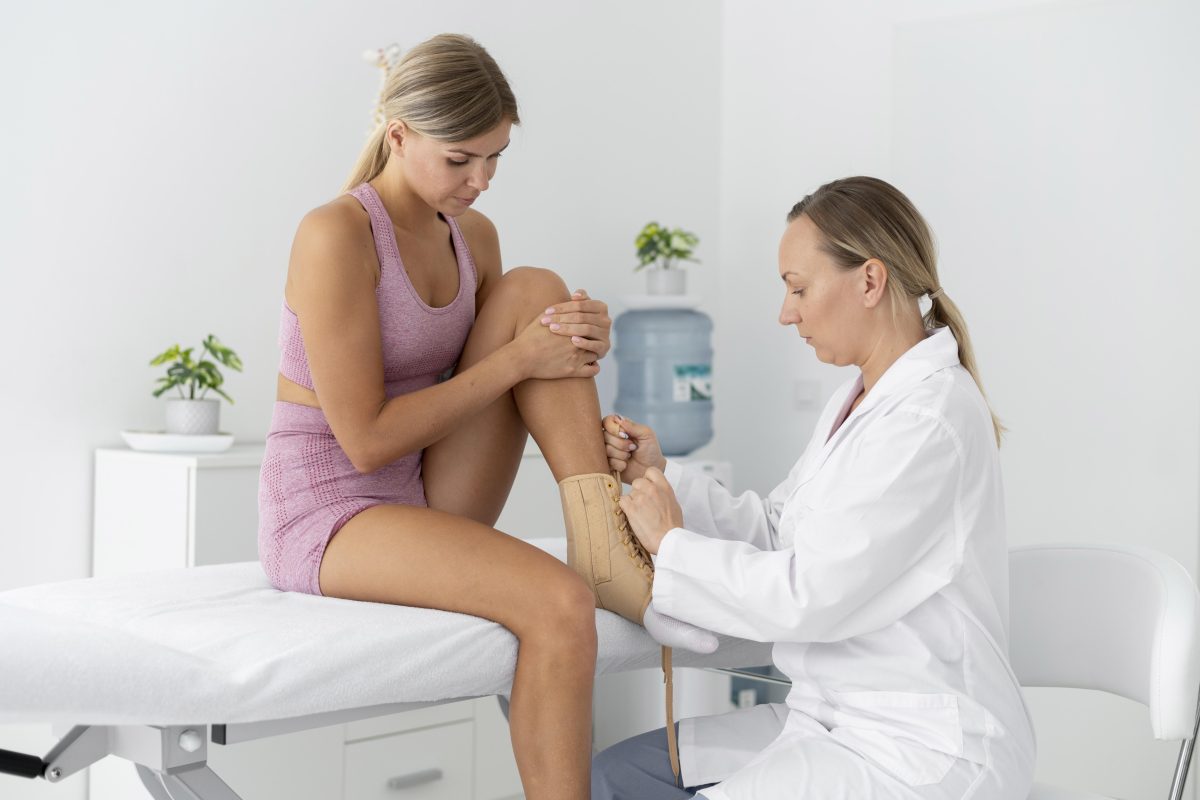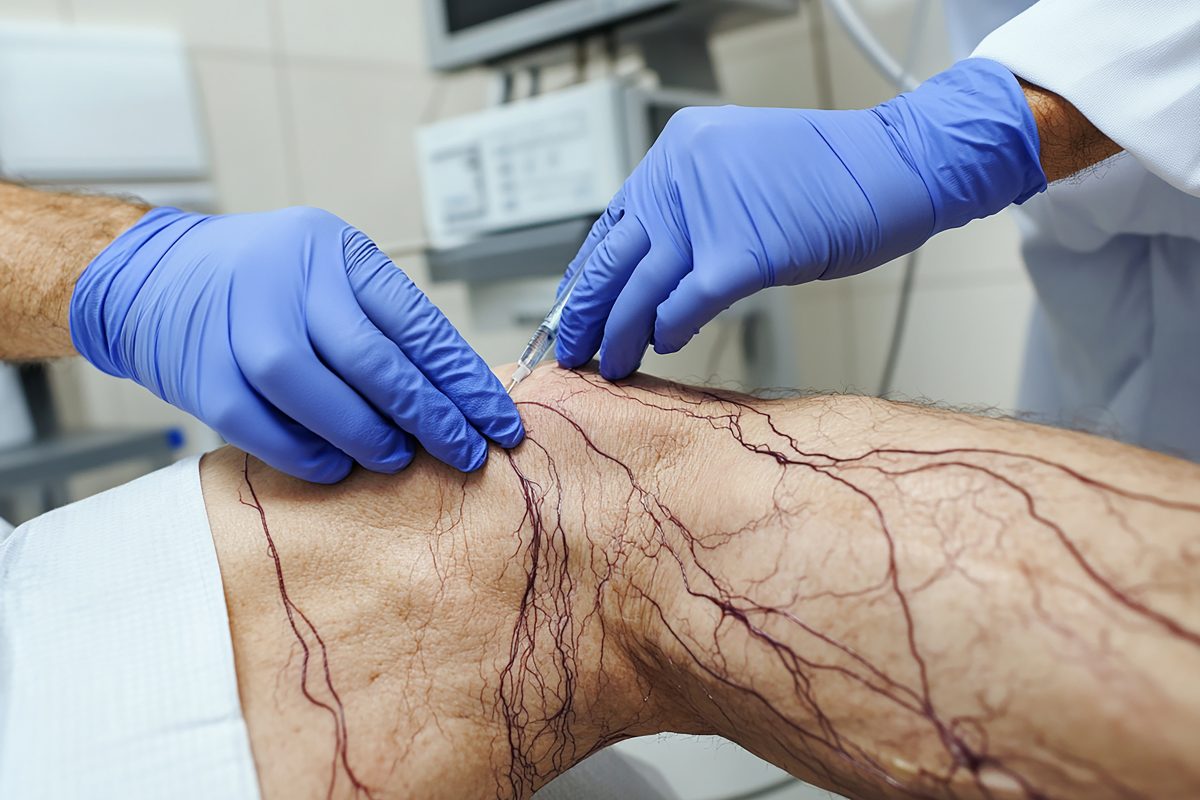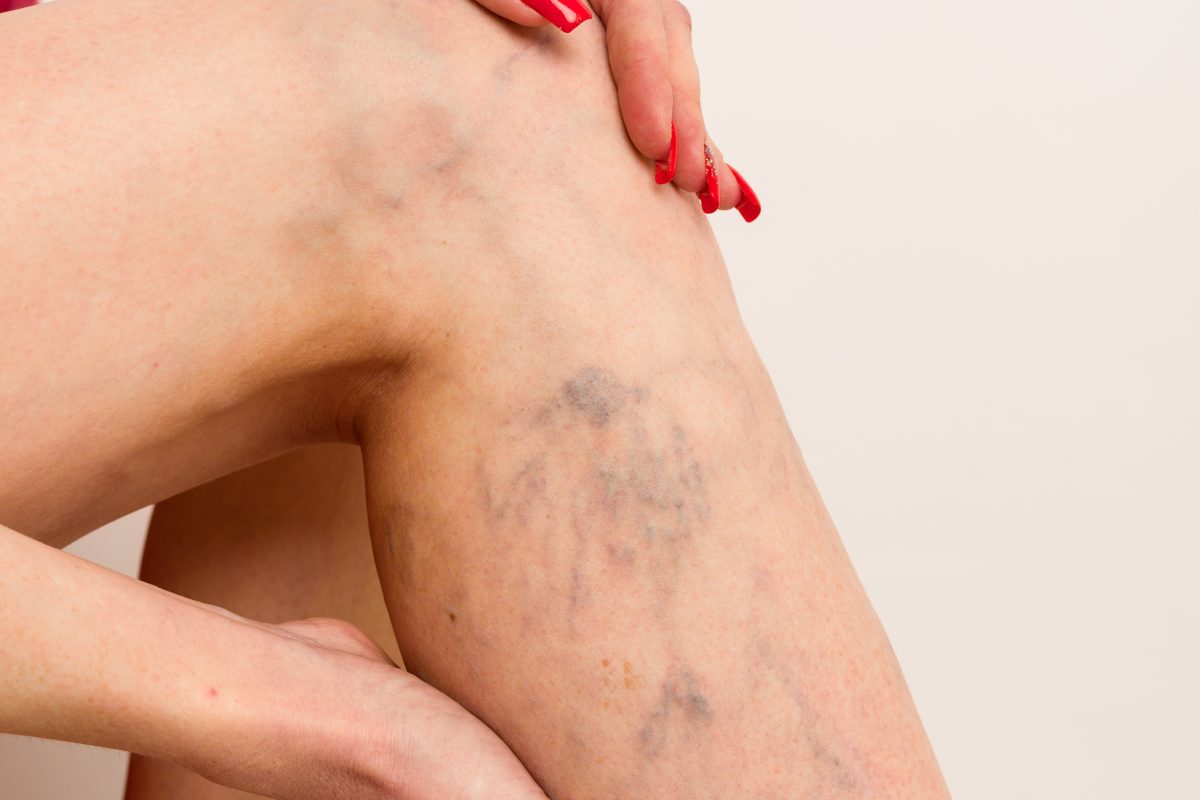Spider Veins- those thin, web like blue, red or purple lines (blood vessels) commonly seen on legs and face – may appear as a minor cosmetic issue at first glance, but there is more to the story. While they are generally harmless, spider veins can sometimes indicate underlying venous insufficiency. While they often cause aesthetic concerns, neglecting them can lead to complications that may require medical intervention. If you or a loved one is experiencing spider veins, understanding the causes, risks, and treatment options is essential.
What Are Spider Veins?
Spider veins are small, damaged veins that appear on the surface of the skin, often resembling a web-like pattern. They are commonly found on the legs and face and can be red, blue, or purple. Unlike varicose veins, spider veins are typically smaller and do not protrude from the skin, but they can still indicate an underlying vascular issue.
Causes and Risk Factors
Spider veins develop when valves inside the veins weaken, causing blood to pool rather than flow efficiently back to the heart. Several factors contribute to their development, including:
- Genetics: A family history of venous conditions increases the likelihood of developing spider veins.
- Prolonged Standing or Sitting: Occupations that require long hours on your feet, such as nursing or retail jobs, can contribute to venous insufficiency.
- Hormonal Changes: Pregnancy, menopause, and hormonal therapies can weaken vein walls, leading to spider veins.
- Aging: As we age, vein elasticity decreases, making veins more susceptible to damage.
- Obesity: Excess weight puts added pressure on veins, increasing the risk of venous insufficiency.
Are Spider Veins a Serious Concern?
Although spider veins are often dismissed as a cosmetic concern, they can lead to discomfort, swelling, and even skin ulcers in severe cases. Individuals experiencing pain, heaviness, or burning sensations in their legs should seek medical evaluation. Ignoring these signs could result in complications such as deep vein thrombosis (DVT) or chronic venous insufficiency (CVI).
Advanced Spider Veins Treatment in Mumbai
For those seeking effective solutions for spider veins, Dr. Ashish Dhadas, a leading varicose veins specialist in Thane, offers advanced and minimally invasive treatments. Some of the most effective options include:
- Sclerotherapy: A non-surgical procedure where a special solution is injected into the affected veins, causing them to collapse and fade over time.
- CLaCS Treatment (Cryo-Laser and Cryo-Sclerotherapy): An advanced technique combining laser therapy and sclerotherapy with augmented reality to precisely target and treat the affected veins. CLaCS is a cutting-edge, minimally invasive option that offers excellent cosmetic results with minimal discomfort.
- Endovenous Laser Treatment (EVLT): A highly effective technique for treating larger veins contributing to spider veins.
With the latest medical advancements, spider veins treatment in Mumbai has become safer and more effective, ensuring optimal results with minimal downtime.
When to Consult a Specialist
If you are experiencing symptoms such as leg pain, itching, swelling, or visible vein clusters, it is crucial to seek medical advice. Dr. Ashish Dhadas in Thane provides expert guidance and personalized treatment plans to address spider veins and their underlying causes.
Conclusion
Spider veins may seem like a minor issue, but they can be an indication of an underlying venous condition. Seeking timely medical intervention can prevent complications and improve your vascular health. For professional consultation and the best spider veins treatment in Mumbai, consider visiting Dr. Ashish Dhadas, a trusted expert in varicose vein care.
Take the first step towards healthier legs by booking a consultation today!





